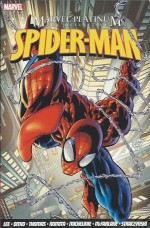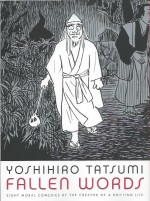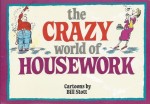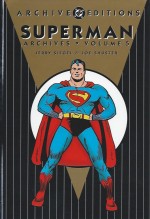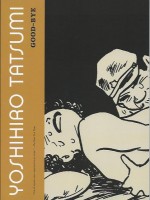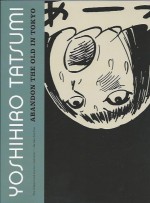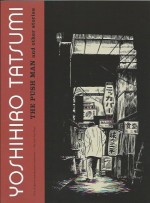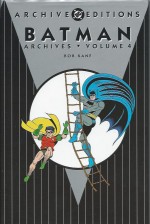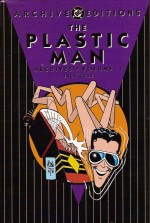
By Jack Cole (DC Comics)
ISBN: 1-56389-468-8
Jack Cole was one of the most uniquely gifted talents of American Comics’ Golden Age, crafting landmark tales in horror, true crime, war, adventure and especially superhero genres. His incredible humour-hero Plastic Man remains an unsurpassed benchmark of screwball costumed hi-jinks: frequently copied but never equalled. As the Golden Age faded, Cole could see the writing on the wall and famously jumped into gag and glamour cartooning, becoming a household name when his brilliant watercolour gags and stunningly saucy pictures began running in Playboy with the fifth issue. Ever-restless, Cole eventually moved into the lofty realms of newspaper strips and, in May 1958, achieved his life-long ambition by launching a syndicated newspaper strip, the domestic comedy Betsy and Me.
On August 13th 1958 at the moment of his biggest break he took his own life.
The unexplained reasons for his death are not as important as the triumphs of Cole’s artistic life and this captivating paperback (reprinting a rare hardback compilation from 2004) provides a fascinating insight into a transitional moment in his artistic development.
Without doubt – and despite great successes with other heroic characters as well as in the crime and horror genres – Cole’s greatest creation was the zany, malleable Plastic Man who quickly grew from a minor B-character into one of the most memorable and popular heroes of the Golden Age and seemed to be the perfect fantastic embodiment of the sheer energy, verve and creativity of that era when anything went and comics-makers were prepared to try out every outlandish idea…
This premier deluxe hardback collection reprints the first twenty episodes of the Stretchable Sleuth’s astounding exploits from anthology title Police Comics covering the period August 1941- June 1943, culled from a time when nobody really knew the rules, creators, publishers and readers were prepared to try literally anything and by sheer Darwinian processes the cream of the crop always rose to the top…
After a fulsome Foreword by legendary comics genius Will Eisner and the appreciative Introduction ‘Plastic Man and Jack Cole’, the magic begins with the first of twenty stories, most of which originally appeared without individual titles.
The debut and origin of Plastic Man happened in the middle of Police Comics #1, a brief but beguiling six-pager which introduced mobster Eel O’Brian, shot during a factory robbery, soaked by a vat of acid and instantly, callously, abandoned by his partners in crime. Crawling away, Eel was found by a monk who nursed him back to health and proved to the hardened thug that the world was not just filled with brutes and vicious chisellers all after a fast buck.
His entire outlook altered and somehow gifted with incredible malleability (he surmises it was the chemical bath mingling with his bullet wounds), Eel decides to put his new powers to use cleaning up the scum he used to run with. Creating the identity of Plastic Man he thrashes his own gang and begins his stormy association with the New York City cops…
Police #2 saw Plas apply for a job with the cops and only to be told he could join up if he accomplished the impossible task of capturing the notorious and slippery Eel O’Brian, currently the Most Wanted crook in eight states… Ever wily, the Rubber-Band Man bided his time and won the position anyway by cracking an international dope racket (that’s illegal narcotics, kids) reaching from Canada to Chinatown, whilst in #3 he fully capitalised on his underworld reputation and connections to bust up a Pinball Racket led by a cunning crook with ears inside the Police Department itself.
‘Madame Brawn’s Crime School for Delinquent Girls’ pitted the Silly Putty Paladin against a brutal babe intent on taking over the City’s mobs, and despite getting a thorough trouncing she and her gang of gal gorillas returned in the next issue, having turned her burly hand to a spot of piracy.
Police Comics #5 (December 1942) also marked a major turning point for Plastic Man as with that issue he took the cover-spot away from fellow adventurer and failed superstar Firebrand, a position he would hold until costumed heroes faded from popularity at the end of the 1940s.
In issue #6 Plas’ burgeoning popularity was graphically reflected in a spooky mystery involving murderous disembodied hands, in #7 – as Eel – he infiltrated and dismantled the massed forces of the ‘United Crooks of America!’ whilst #8 found the hero seriously outmatched but still triumphant when he battled a colossal, city-crushing giant ‘Eight Ball!’ and its decidedly deranged inventor, and #9 reached an early peak of macabre malevolence as Plastic Man foiled a traitorous little mutant dubbed Hairy Arms in ‘Satan’s Son Sells Out to the Japs!’, a darkly bizarre thriller which saw the regular story-length jump from six to nine pages.
The carnival of cartoon grotesques continued in #10 as hayseed wannabe-cop Omar McGootch accidentally involved the Malleable Mystery-man in a Nazi plot to steal a new secret weapon, whilst #11 found Plastic Man in mortal combat with the spirit of a 17th century London alchemist whose brain was unearthed and accidentally transplanted into a wounded spitfire pilot, suddenly gaining incredible mystic powers in the process…
In Police #11 a desperate blackmailer joined forces with a criminal astrologer who predicted perpetual failure unless Plastic Man was killed, before Cole introduced his second most memorable character in #13’s ‘The Man Who Can’t be Harmed’…
Woozy Winks was an indolent slob who accidentally saved a wizard’s life and was gifted in return with a gift of invulnerability: all the forces of nature would henceforth protect him from injury or death. Flipping a coin the oaf decided to get rich quick with his power. Unable to stop him Plas was forced to appeal to his sentimentality and better nature and, once Woozy repented, was compelled to keep him around in case he strayed again…
Unlike Omar, Woozy Winks – equal parts Artful Dodger and Mr. Micawber, with the verbal skills and intellect of Lou Costello’s screen persona – would prove to be a perfect foil for Plastic Man: the lazy, venal, ethically fluid reprobate with sticky fingers who got all the best lines, possessed an inexplicable charm and had a habit of finding trouble. It was the perfect marriage of inconvenience…
As the page count jumped to 13, they were soon on the trail of Eel O’Brian himself in issue #14, but during the chase Woozy stumbled onto a slavery racket which soon foundered against his insane luck and Plastic Man’s ingenuity. In a hilarious twist Plas then let Woozy arrest him, but then escaped from under the smug cops’ very noses…
When war scientists investigated Plastic Man and Woozy’s uncanny abilities in #15 it led to murder, a hot pursuit to Mexico City and almost a new Ice Age, whilst in #16 disgruntled Native Americans organised a ‘Revolt against the USA’ and a movie cast succumbed one by one to a murderous madman in #17 before the hilarious #18 revealed what happened after ‘Plastic Man is Drafted’…
The blockbusting dilemma of all branches of the Armed Services fighting to recruit him was only solved when the President seconded Plas to the FBI, and his first case – with Woozy in tow – found the Stretchable Sleuth investigating ‘The Forest of Fear!’ in a 15 page terror-tale involving a cabal of killers and an army of animated oaks.
This initial deluxe outing ends with #20 and the ‘Woozy Winks Detective Agency’ as, with Plastic Man temporarily laid up wounded, the rotund rascal took centre stage to solve a robbery in a frantic, madcap and surreal extravaganza reminiscent of the screwball antics of the movie Hellzapoppin’ and the anarchic shtick of the Marx Brothers…
Exciting, innovative, thrilling, funny, scary and still visually intoxicating over seven decades later, Jack Cole’s Plastic Man is a truly unique creation that has only grown in stature and appeal. This is a pure comics experience that no fans should deny themselves.
© 1941, 1942, 1943, 1998 DC Comics. All Rights Reserved.

